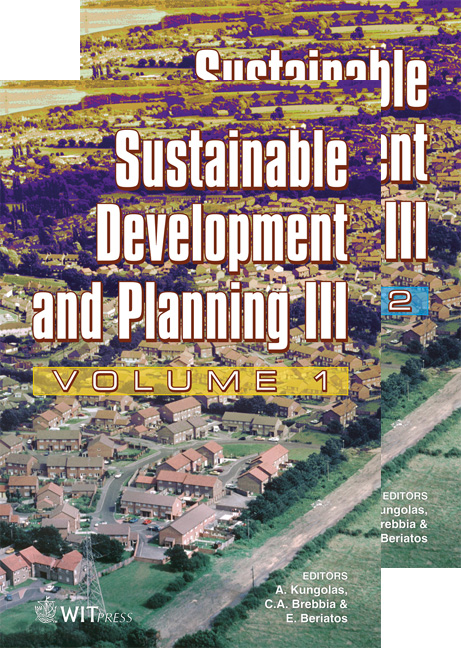The Sustainable Process Index SPI As An Engineer’s Tool For Environmental Impact Assessment Of Processes: The Sugar Industry As A Case Study
Price
Free (open access)
Transaction
Volume
102
Pages
8
Published
2007
Size
351 kb
Paper DOI
10.2495/SDP070321
Copyright
WIT Press
Author(s)
G. Gwehenberger & M. Narodoslawsky
Abstract
The Sustainable Process Index (SPI), a member of the ecological footprint family, is an ISO 14000 compatible tool for the evaluation of environmental impacts of processes. It allows the calculation of the relevant ecological pressures of a process including prechain and product usage. The SPI focuses on aspects of environmental sustainability and is aimed at engineers and the factors they can influence most effectively: material and energy flows that processes exchange with their environments. The data of these flows are roughly known early in process development. The corresponding data for natural systems are the sedimentation rate of carbon in oceans, the natural concentrations of substances in soil and water, the exchange rates per area unit of airborne pollutants between forests and air as well as the replenishment rates for soil and water. Most of the natural flow and quality data allow a certain \“regionalization” of the SPI wherever that is needed. For a fast calculation of the SPI a computer program based on MS Excel has been developed. This tool has proven its usefulness in comparing different engineering options in view of their ecological impact. The most recent case studies are the investigation of the ecological and economical feasibility of small-scale ethanol production facilities that use corn or wheat as a raw material and the analysis of alternate usages of (by)products of the European sugar industry. The results of these case studies will be discussed here Keywords: Life Cycle Analysis, environmental impact assessment, sugar production, bio fuels, optimization.
Keywords
Life Cycle Analysis, environmental impact assessment, sugar production, bio fuels, optimization.





